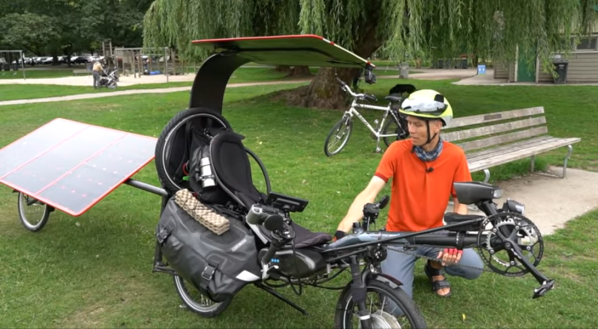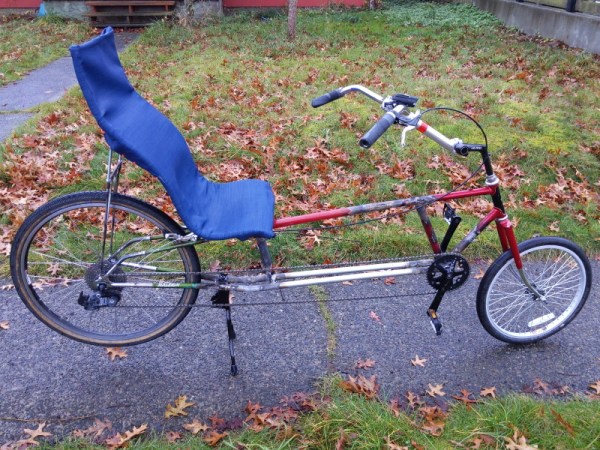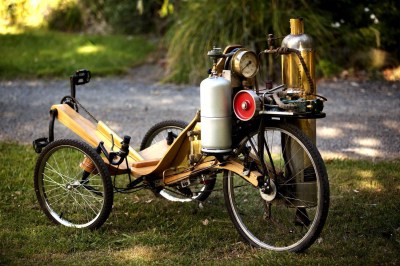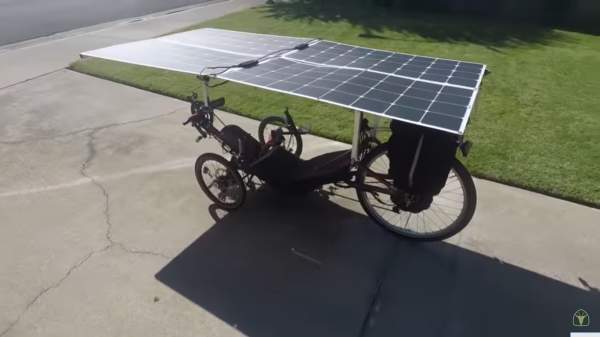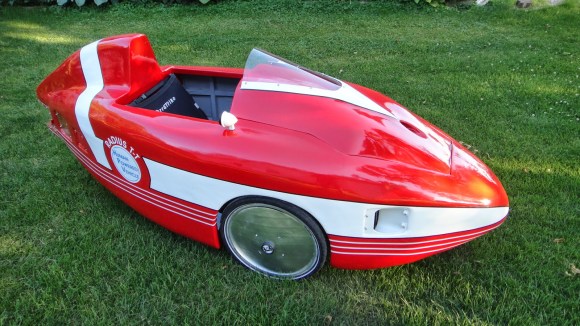Normally when making a long voyage in a canoe, an adventurer would paddle the vessel as far as possible and then “portage”, or carry, the canoe over the short sections of land separating the bodies of water. Portaging is a lot of work, though, since canoes generally aren’t particularly light or designed for traveling over land. To solve this problem, [Ben] is modifying his home-built canoe with some interesting parts to make it into an amphibious vehicle which can much more easily traverse land.
The wheels for the amphibious craft come from BMX bicycles, which have much smaller wheels as well as more robust frames when compared to more traditional bicycles. The rear of the canoe was modified to use a go-kart axle with two driven wheels. An additional set of cranks mounted outboard drive a custom-built paddle to propel the boat when traveling on water. The frame borrows heavily from recumbent bicycle design and includes a similarly comfortable seat, with steering handled by a wheel at the front when traveling on land and a rudder at the rear when traveling over water.
[Ben] intends to take this unique vehicle on a cross-country trip across Scotland, with the first part of the adventure on water via the Caledonian Canal and the return trip on land via the Great Glen Way. Hopefully, there’s no actual portaging required for his trip as the bike components add a tremendous amount of weight to the boat. [Ben] he even added a sail that could theoretically be used in either mode. We’ll be keeping watch for his next videos showing his adventure, and in the meantime daydreaming about other unique bikes that let you travel where bikes normally can’t.


